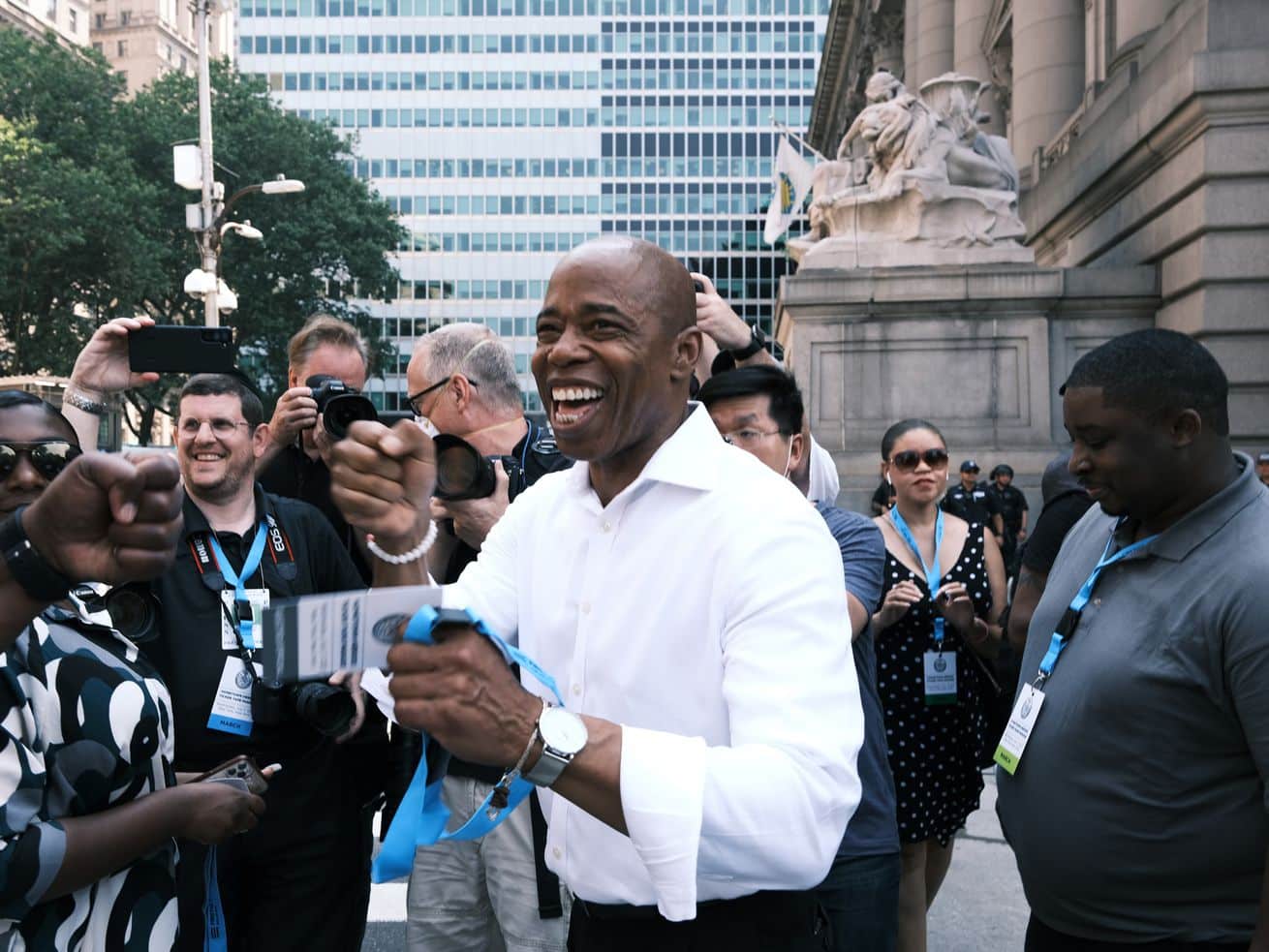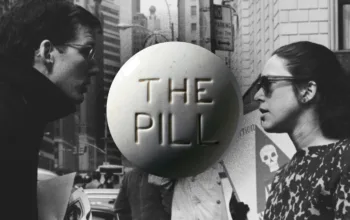The verdict so far is decidedly mixed.
New York City’s grand experiment with ranked-choice voting ended in a bit of an anticlimax on Tuesday when a newly released count showed Eric Adams — the frontrunner on Election Day in the Democratic primary — hanging on for a narrow victory.
The new system did not end up propelling an underdog candidate past the first-round leader. But it almost did: In first-choice votes, Adams led by 9.5 percentage points over Maya Wiley. Yet by the time the reallocation rounds had worked their magic, Wiley was gone, and Adams led the remaining candidate, Kathryn Garcia, by just 1 percentage point. Garcia had been in third place in the initial round, but ultimately nearly won.
Ranked-choice voting was the dream system of many progressive election reformers, and New York’s mayoral contest was its biggest spotlight yet in the United States. There were many questions about how voters would adjust to this new system during a pandemic and whether it could live up to its promises.
Ultimately, the results are mixed. It wasn’t the utter disaster some feared, but whether the advantages of ranked choice justify its drawbacks is certainly debatable.
For instance, there are questions about whether some voters were confused by the new system. Fifteen percent of ballots in the mayoral contest ended up ranking neither Adams nor Garcia, so they played no role in the final tally. It’s hard to say whether that’s because those voters preferred other candidates or because they didn’t understand the system, but in any case, the outcome was so close that their ballots could have made a difference.
Questions also remain about whether ranked-choice was better than a traditional runoff between the top two vote-getters might have been. Would a runoff have been helpful and useful for New York City voters in presenting a simplified choice between two candidates, or would it have been a waste of time and money?
Finally, the New York count was slow and botched. Ranked-choice voting mostly isn’t to blame here — the main culprits for the counting problems this time were other state and city policies (as well as a simple error) — but it’s true that in practice, ranked choice often tends to produce slower results than ordinary elections that get informally “called” by the media.
Did voters understand the system?
One major question hanging over this election was whether voters had been sufficiently educated about how ranked-choice voting works. For people who have voted the same way their whole lives, it can be a confusing change. (Rather than just picking one candidate per election, New York City voters got to rank up to five, in order of preference. During the count, lower-performing candidates get eliminated, and ballots for them are reallocated to whichever remaining candidate the voter ranked next.)
One number analysts tend to look to here is the number of “exhausted ballots.” Those are ballots that end up playing no role in the final round because all the candidates they list have been eliminated.
This could occur for several reasons. One is confusion or a lack of understanding of how the system works. Another is running out of ranking slots (New York City had 13 mayoral candidates listed on the ballot, but voters could rank only five). This could also be voters’ personal choice — even with the ranked-choice option, some people simply prefer to just list one candidate, professing indifference between all the others. But often, a high number of exhausted ballots is viewed by critics as a problem for the system.
Overall, about 15 percent of ballots in the Democratic mayoral contest ended up exhausted by the final round, meaning those voters ranked neither Adams nor Garcia. So another way to view the final result is that 43 percent of voters ultimately chose Adams, 42 percent ultimately chose Garcia, and 15 percent ultimately chose neither.
Exhausted ballots may have been more consequential in the final elimination round, when Maya Wiley was eliminated. Nearly 74,000 of her voters’ ballots ended up exhausted because they ranked neither Adams nor Garcia.
The remaining Wiley voters broke strongly to Garcia over Adams: Garcia picked up about 129,000 votes from them, while Adams gained about 49,000. This was almost enough for Garcia to pass Adams, but not quite — she fell about 8,400 votes short. So if fewer Wiley voters had exhausted their ballots, it’s entirely plausible that Garcia could have overtaken Adams.
It’s also plausible that a significant portion of Wiley’s progressive base truly was indifferent about the choice between Garcia and Adams, both centrists, and as such fully intended to leave them both unranked. (Some of them, as the results show, also preferred Adams to Garcia.)
But the strategy of ranked choice can be complicated, and the messages around it often conflicted. Proponents argue it frees people up to vote for their “true” preferences, but in a crowded field with limited ranking slots available, that could be a path to your ballot becoming exhausted. The best strategy to prevent that was to make sure you ranked at least three of the Adams-Garcia-Wiley-Yang quartet who led the polls, but how many voters were aware of that?
If the outcome was ultimately determined by a lack of voter understanding of the system, that wouldn’t be ideal — though, of course, it’s only because of ranked choice that Garcia was in contention at all, as she was in third place in the first round.
Would a runoff have been useful for voters?
The difficulty in comparing a ranked-choice election outcome to how things would have gone under a different system is that it’s not clear the results really would have been so similar. In a more traditional election, campaign strategies would have been different (Garcia and Yang likely would not have campaigned together, for instance), minor candidates may have dropped out before Election Day, and voters may have cast their ballots more strategically in the first round.
Ultimately, Eric Adams had 30.8 percent of first-choice votes. Under the previous system, he would have needed 40 percent to avoid a runoff. So, unless you think he would have performed far better in a world without ranked choice, the real result that was averted by the new system was not an outright Adams win but a runoff with either Wiley or Garcia (they were close to each other in the first round).
So is it better that ranked choice settled the primary quickly rather than kicking it to a runoff that would have framed a clear choice between Adams and one alternative?
Ranked-choice activists have various criticisms of the runoff. They say it’s expensive for the city to hold and inconvenient for voters to have to vote again. They point out that turnout usually drops in runoffs, arguing this makes the ultimate outcome less representative of the electorate’s wishes. And they say things tend to get very nasty and negative.
But a runoff has its virtues. It would have framed a clear choice for voters between Adams and one alternative candidate (as opposed to the confusing strategies in the crowded field described above), and it would have ensured both of those candidates got scrutiny from voters. And a turnout drop is hardly a sure thing — as MSNBC’s Steve Kornacki pointed out, turnout actually increased in the runoff the last time New York City Democrats had one for the mayoral race, in 2001.
Perhaps a runoff would have gotten to the same outcome, an Adams victory, at more expense. Or perhaps his opponent would have been able to distinguish herself better now that she was no longer in a crowded field. Again, we’ll never know for sure.
Were the slow and botched counts ranked choice’s fault?
Much of the grumbling about ranked choice so far has focused on two things that are (mostly) not its fault: the botched count and the slow count.
The botched count last week, in which the New York City Board of Elections accidentally included about 135,000 “test ballots” in its publicly posted tally, is clearly not a ranked-choice problem — it was an error made by a staffer that was missed because of generalized sloppiness and incompetence among board members. The most promising way to avoid such embarrassing errors in the future is to reform the long-troubled board itself.
Blame for the slow count, meanwhile, lies mostly with New York City and state policies regarding the counting of absentee ballots. The state had an antiquated practice of refusing to count any absentee ballots at all until seven days after the election (unlike other states that start counting them as soon as they come in). The pandemic-driven surge in mail voting led to very slow counts in all New York elections (including those that didn’t use ranked choice in 2020), and efforts are underway to reform this.
Still, it is true that ranked choice does typically mean slower results than Americans are used to. In most US elections, much of the count is reported on election night, and media outlets often unofficially “call” a winner based on that information, even though the actual results often won’t be finalized for weeks. (A close election, or any election where a significant portion of the vote remains uncounted, can take longer to call.)
In ranked-choice voting, though, election administrators need to determine the order of candidates so they can eliminate them one by one and reallocate their ballots accordingly. They also have to decide whether to release a preliminary reallocation tally well before every ballot is counted (as New York City did last week and is doing again this week, to some criticism), or wait to reallocate until every ballot is in, which would take a really long time).
Does this matter? Historically, progressives have tended to argue that slow election counts aren’t a big deal because making sure that every vote counts, and doing the count properly, are more important. Donald Trump’s conduct in 2020 did raise alarms that a slow vote count could be manipulated by demagogues to sow public distrust in election results. But it’s hard to argue those stakes are anywhere near as high in a mayoral primary — the general election is still months off, after all.
Author: Andrew Prokop
Read More



